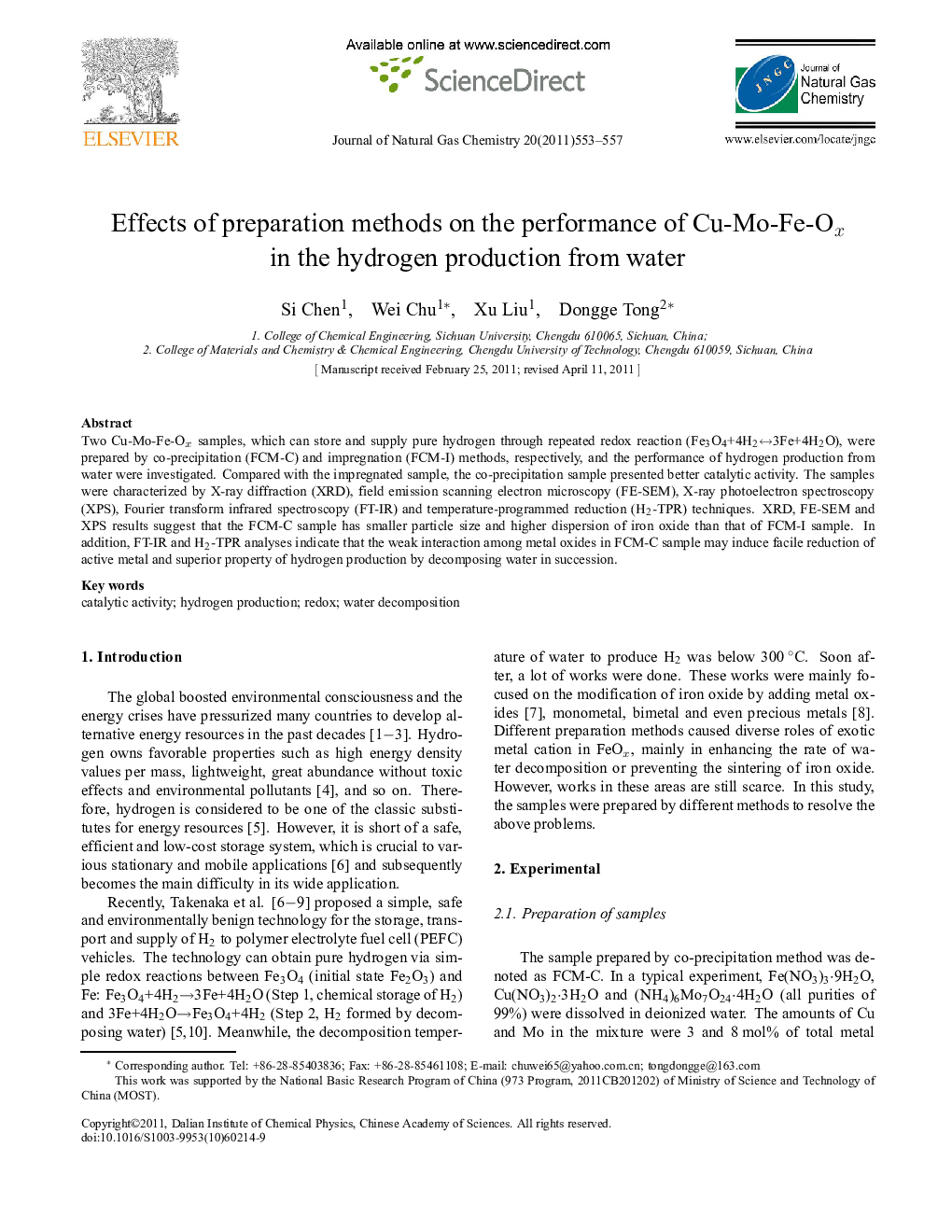| Article ID | Journal | Published Year | Pages | File Type |
|---|---|---|---|---|
| 71500 | Journal of Natural Gas Chemistry | 2011 | 5 Pages |
Two Cu-Mo-Fe-Oj; samples, which can store and supply pure hydrogen through repeated redox reaction (Fe3O4+4H2↔Fe+4H20), were prepared by co-precipitation (FCM-C) and impregnation (FCM-I) methods, respectively, and the performance of hydrogen production from water were investigated. Compared with the impregnated sample, the co-precipitation sample presented better catalytic activity. The samples were characterized by X-ray diffraction (XRD), field emission scanning electron microscopy (FE-SEM), X-ray photoelectron spectroscopy (XPS), Fourier transform infrared spectroscopy (FT-IR) and temperature-programmed reduction (H2-TPR) techniques. XRD, FE-SEM and XPS results suggest that the FCM-C sample has smaller particle size and higher dispersion of iron oxide than that of FCM-I sample. In addition, FT-IR and H2-TPR analyses indicate that the weak interaction among metal oxides in FCM-C sample may induce facile reduction of active metal and superior property of hydrogen production by decomposing water in succession.
